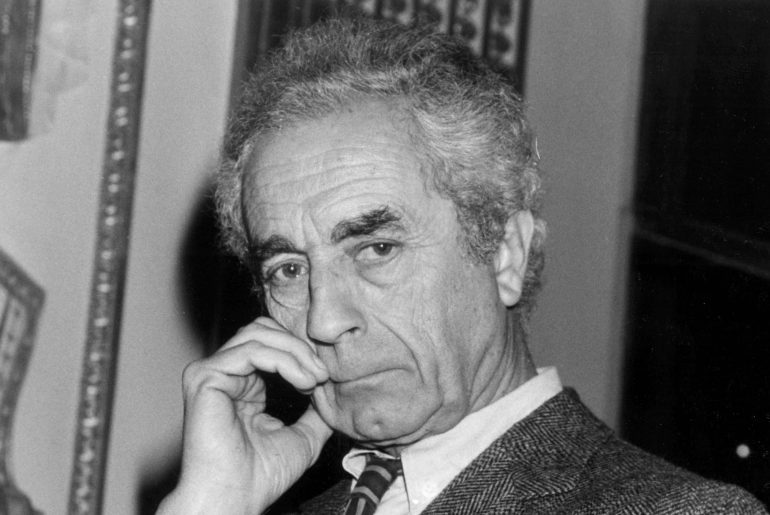Alongside Luchino Visconti and Federico Fellini, the Italian film critic and director was the most important pioneer of Italian post-war cinema. In his films, Michelangelo Antonioni expressed his basic concern, the loneliness and alienation in modern industrial society, with a remarkable love of aesthetic experimentation. Due to the subject matter and the style, Antonioni’s productions are undisputedly considered to be an important contribution to international film history, despite some commercial failures…
Michelangelo Antonioni was born on September 29, 1912 in Ferrara, Italy, to Carlo and Elisabetta Antonioni.
Michelangelo Antonioni grew up in a middle-class family. After attending a technical college, he studied economics in Bologna. During his studies he gained some theater experience and wrote as a film critic for “Corriere Padano” until 1939. In the same year Antonioni settled in Rome, where he worked as an editor for the film magazine “Cinema”. He also enrolled in the “Centro Sperimentale di Cinematografia”, the Roman film school, for a few months. In 1942, after a few script assignments for Roberto Rosselini, among others, he was contracted as an assistant director for a film by Marcel Carné (“Les visiteurs du soir”). The difficult filming in Germany-occupied France was his first directing experience. In the same year he married Letizia Balboni.
Returning to Italy, he managed to start his first short film in 1943 under the chaotic conditions of the Roman cinema world. However, “Gente del Po” could only be completed and shown in 1947. However, the nine-minute film represented a groundbreaking debut work by the director, whose style already referred to the neo-realism of Italian post-war cinema. In the two years 1948 and 1949 Antonioni made two more short films. He also worked as a screenwriter for Giuseppe De Sanctis and Luchino Visconti. He made his first feature film in 1950. But the title “Cronaca di un amore” was only a moderate success with the public, which was further reduced by the bankruptcy of the production company and the termination of the performances. The following feature films “Le amiche” (1955), “Il grido” (1956/57) and “L’avventura” (1959) were also made under considerable financial difficulties, which put the uncomfortable screenwriter and director in a permanent conflict with the Italian film producers.
The economic and artistic failure of “Il grido” prompted Antonioni to temporarily turn to the theater in 1957. However, the theater troupe he founded soon disbanded without result. In 1958, Antonio kept his head above water with smaller film work. In 1959, his feature film “L’avventura” gave him his breakthrough as a successful film author and director not only in Italy, but above all in France. Two years later, “La notte” starring Marcello Mastroianni and Jeanne Moreau was released, which earned him the Silver Bear at the Berlin Film Festival. The film title “L’eclisse” with Alain Delon followed in 1962. The trilogy impressively describes the emotional poverty and endangerment of interpersonal relationships in modern industrial society. Antonioni received the Golden Lion at the Venice Biennale in 1964 for “Il desserto rosso”. The international success of the trilogy has now also opened up opportunities for Antonioni to work abroad.
Shot in London, 1966’s Blow Up was his most commercially successful work, for which he won the Palme d’Or at the Cannes Film Festival. The film “Zabriskie Point” from 1970, which was made in the USA, was not a box office success and was also judged ambivalently by the critics. Antonioni celebrated further successes in 1973 with “Professione: reporter”. He also excelled as a writer and painter in the 1980s and 1990s. In 1983 he published his collection of short stories “Quel bowling sul Tevere”. In 1985 Antonioni suffered a stroke that left him paralyzed on one side. The following year he married Enrica Fico for the second time. In 1992 he was appointed Knight of the Order of Merit, Italy’s highest national award, and in 1993 he received the award from the European Film Academy for his complete works.
In 1986, due to his poor health, Antonioni contributed only occasionally to Italian cinema as a screenwriter or as a director of television documentaries. He once again demonstrated his willingness to experiment in a self-produced promotional film about Toyota and a video clip about the Italian rock singer Gianna Nannini. Michelangelo Antonioni’s last major directorial work dates from 1995: he co-directed the film “Al di là delle nuvole” with Wim Wenders.
Michelangelo Antonioni died in Rome on July 30, 2007.
What is Michelangelo Antonioni known for?
Michelangelo Antonioni, (born Sept. 29, 1912, Ferrara, Italy—died July 30, 2007, Rome), Italian film director, cinematographer, and producer noted for his avoidance of “realistic” narrative in favour of character study and a vaguely metaphorical series of incidents.
Did Michelangelo Antonioni have children?
She was at his side when he died. He had no children. Mr. Antonioni did not direct a feature film again until 1995, when he was lured out of retirement to make “Al di là Delle Nuvole” (“Beyond the Clouds”) based on a book of stories he had written.
What is Antonioni style?
Antonioni films typically featured jaded lovers in middle-class urban settings, their lives blighted by quiet desperation, joyless sex and existential ennui. His open-ended plots were elliptical, elusive and experimental, providing rich material for both his most ardent admirers and harshest critics.
Where should I start with Michelangelo Antonioni?
The best place to start – Story of a Love Affair
But to get an idea of how Antonioni’s style began to take shape, I’d suggest starting at the beginning with his debut Story of a Love Affair (1950).
Filmography
1943/47 – Menschen am Po (People of the Po)
1948 – Urban cleaning
1949 – The amorous lie
1949 – Aberglauben (Superstition)
1949 – Seven canes one dress
1950 – The faloria cableway
1950 – The villa of the monsters
1950 – Chronik einer Liebe (Chronicle of a love)
1952 – The losers
1953 – The lady without camellias
1953 – Liebe in der Stadt (Love in the City, Episode: Attempted Suicide)
1955 – Die Freundinnen (The friends)
1957 – Der Schrei (The cry)
1960 – Die mit der Liebe spielen (The adventure)
1961 – Die Nacht (The night)
1962 – Liebe 1962 (The eclipse)
1964 – Die rote Wüste (The red desert)
1965 – The Three Faces (Episode: The audition)
1966 – Blow Up (Blowup)
1970 – Zabriskie Point
1972 – Antonionis China (Chung Kuo China)
1975 – Beruf: Reporter (Profession: Reporter)
1980 – Das Geheimnis von Oberwald (The Oberwald Mystery)
1982 – Identification of a woman
1983 – Identifikation einer Frau (Identification of a woman)
1989 – 12 directors for 12 cities (Episode: Rom)
1994 – Beyond the clouds (in Koregie mit Wim Wenders).
1995 – Jenseits der Wolken (Beyond the Clouds)
2004 – Eros (Episode: The Dangerous Thread of Things)











